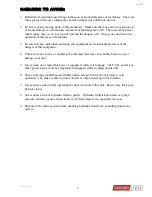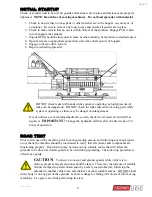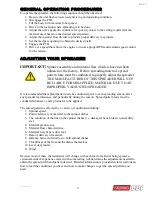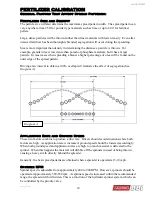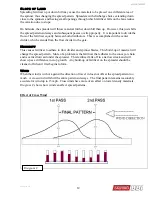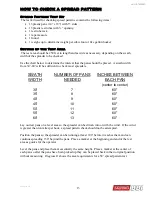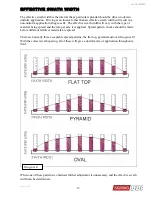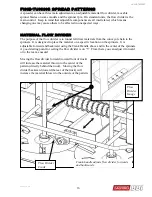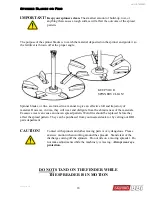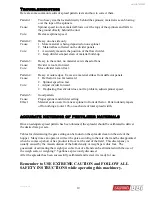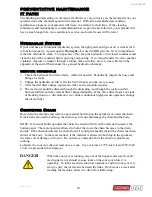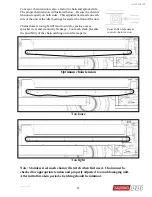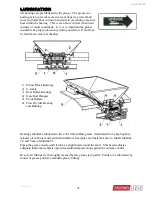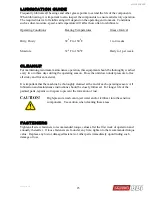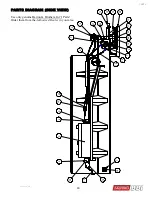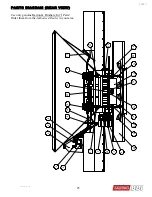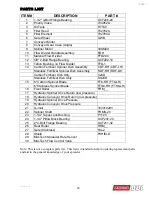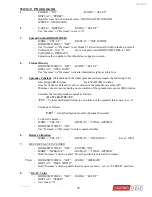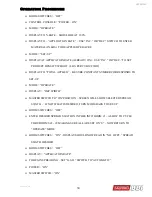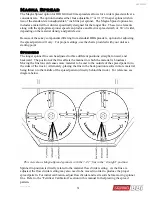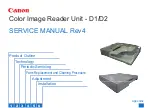
FT TRUCK MT
19
Troubleshooting
Here are some common results of spread pattern tests and how to correct them.
Pattern 1:
Two heavy swaths located directly behind the spinners; material is seen blowing
over the tops of the spinners.
Cause:
Spinner speed too fast, material blows over the tops of the spinners and falls to
the ground directly behind the unit.
Cure:
Decrease spinner speed.
Pattern 2:
Heavy on one side only.
Cause:
1. More material is being deposited on one spinner.
2. Material has collected on the divider panels.
Cure:
1.
Accurately
measure
the
position of the flow divider.
2. Keep divider scraped clean of material build-up.
Pattern 3:
Heavy in the center, no material exists ahead of fans.
Cause:
Divider is too far forward.
Cure:
Move divider toward rear.
Pattern 4:
Heavy at outer edges. Excessive material strikes front deflector panels.
Cause: 1.
Deflector
is too far rearward.
2. Spinner speed too fast.
Cure:
1. Adjust divider forward.
2. If adjusting flow divider does not fix problem, adjust spinner speed.
Pattern 5:
Good pattern
Cause:
Proper spinner and divider setting
Effect:
Material exits on arc from near spinner to front deflector. Pattern density tapers
off to nothing at outer 10% on each side of total spread width.
ACCURATE METERING OF FERTILIZER MATERIALS
Once an adequate spread pattern has been obtained, the spreader should be calibrated to deliver
the desired rate per acre.
Tables for determining the gate setting can be found on the spreader decal on the side of the
hopper. Many times an operator will set the gate according to the rate chart and be disappointed
when he comes up short or has product left over at the end of the field. This discrepancy is
usually caused by the miscalculation of the bulk density or weight per cubic foot. The
guesswork of estimating the weight per cubic foot of a blend can be eliminated with the use of
the weigh scale or weighing 7.5 gallons as previously discussed.
After the spreader has been successfully calibrated and tested, it is ready for use.
Remember to USE EXTREME CAUTION and FOLLOW ALL
SAFETY INSTRUCTIONS while operating this machinery.
ADJUSTMENTS



